What's looking interesting in your rock garden beds in August? I'm sure late season bloom or interest is important to all rock gardeners.
Here, Linum sp. (not Convolvulus holosericeus; come on, guys, please tell me when I'm screwing up!) continues to bloom nicely:
My Tonestus (Haplopappus) lyallii have finally recovered enough to bloom again after a traumatic transplant (evidently!) out of a disintegrating trough to the tufa bed... perhaps a pathetic little display, I suppose, compared to what I see in the wild, but I'm pleased!
Scutellaria hypericifolia continues to bloom beautifully:
First flowers, finally, on Phlomis sieheana, from seed in 2010 (seeds from M. Pavelka; collected at 1500m from Salda Lake, Turkey); there are a few browning leaves on the inflorescence due to, I think, rather wettish conditions this year:
I need to figure out the name of this Campanula... it's not C. rotundifolia (or was not supposed to be) though it is certainly similar:
Campanula hawkinsiana continues to bloom:
I thought I'd try Campanula cervicaria... I guess it is clear why C. glomerata is more widely grown (sort of similar but much showier):











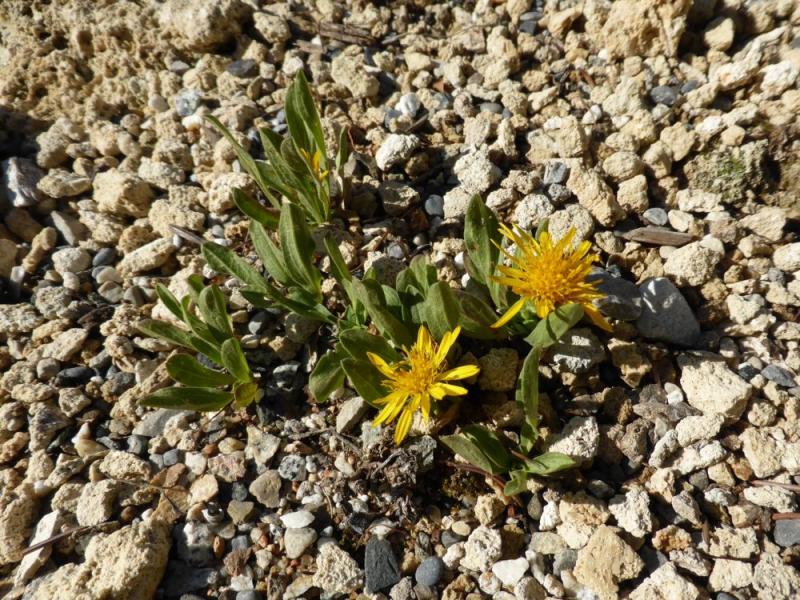


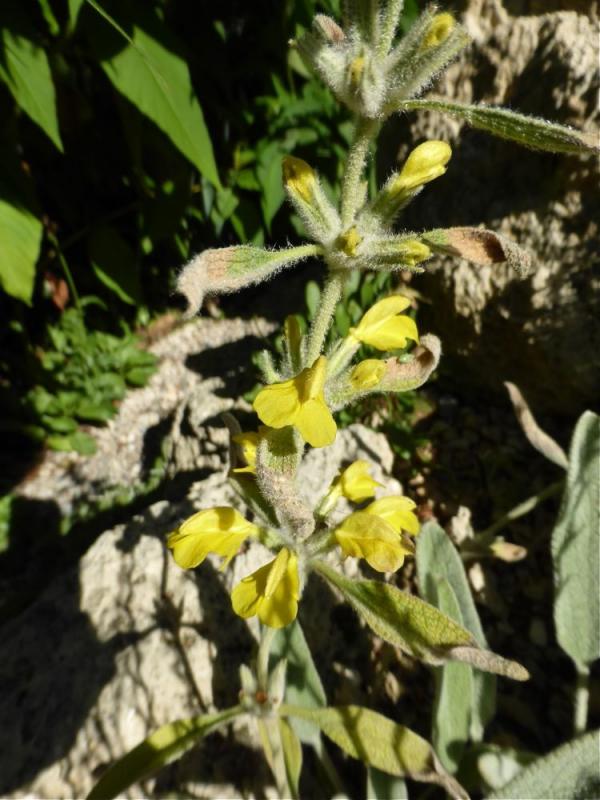
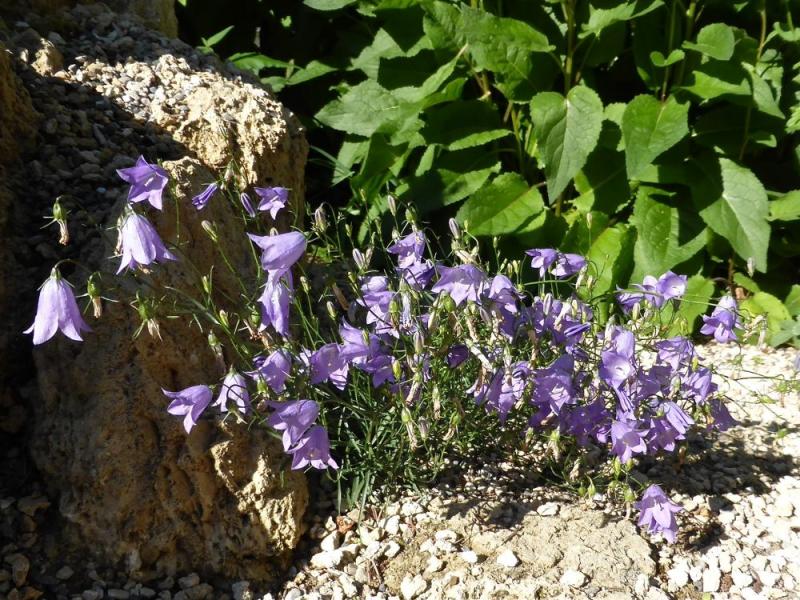
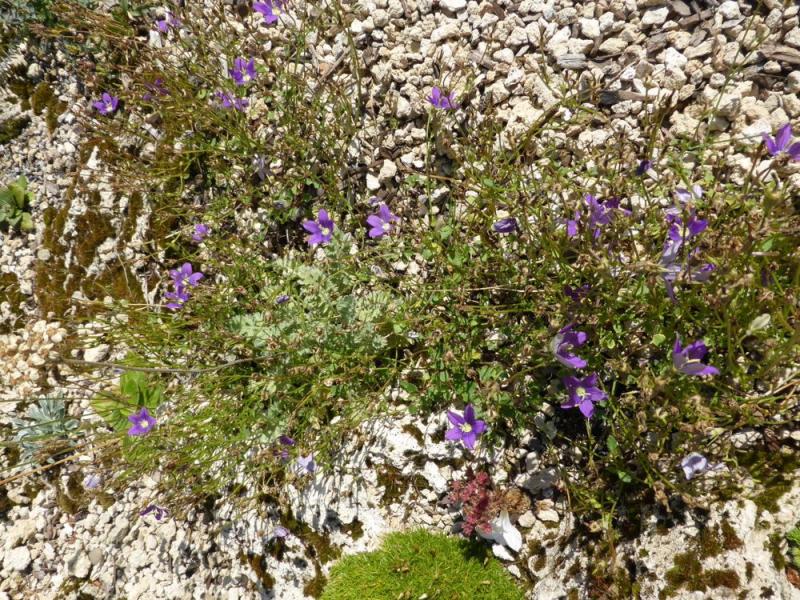

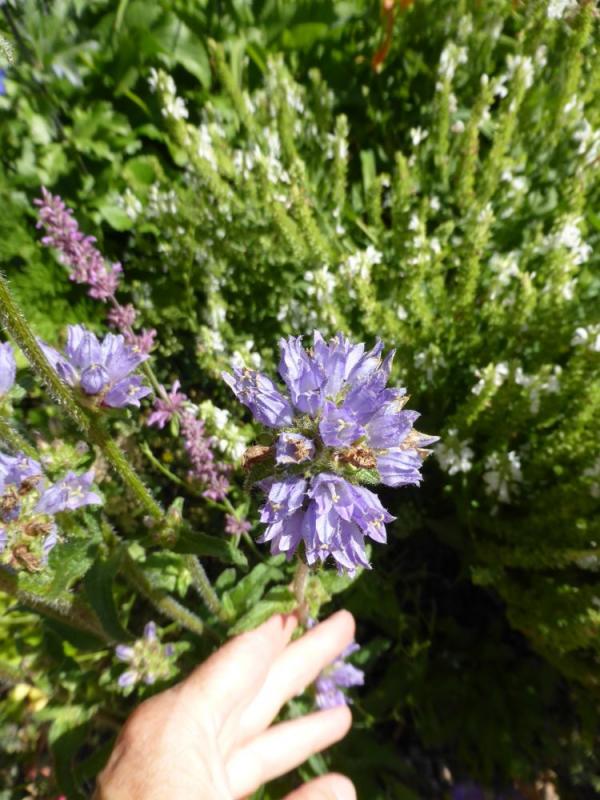
Comments
Trond Hoy
Your bed(s) looks good still,
Sun, 08/04/2013 - 12:49amYour bed(s) looks good still, Lori!
When I think of Convolvulus I always have a weedy winding plant in mind! Seems not all are like that.
Your not supposed to be Campanula rotundifolia looks very much like a rotundifolia! Those growing here tend to spread a little by underground runners though. They are in full bloom here now.
C cervicaria is native here. It is a big plant and often shortlived, never making huge patches like C glomerata.
Michael J Campbell (not verified)
Campanula zoysii
Sun, 08/04/2013 - 1:36amCampanula zoysii
Richard T. Rodich
Hoy wrote:
Sun, 08/04/2013 - 6:29amOh my goodness, Michael! What a specimen to be proud of!
[quote=Hoy]
Your not supposed to be Campanula rotundifolia looks very much like a rotundifolia! Those growing here tend to spread a little by underground runners though. They are in full bloom here now.
[/quote]
I'm glad you said that, Trond. With my very little worldly knowledge of the species, I'll now put in my 2 cents (worth about 1 cent).
Wild Campanula rotundifolia in Minnesota don't spread underground at all, and I usually find them with only one to three flowering stems.
I grew C. rotundifolia Olympica (not sure how valid the name is) to see what difference there might be, and it definitely runs (mildly) underground.
Lori S. (not verified)
Fabulous plant, Michael! One
Sun, 08/04/2013 - 8:31amFabulous plant, Michael! One I hope to succeed with outdoors in the ground one day.
Lori S. (not verified)
I have the impression that
Sun, 08/04/2013 - 11:16amI have the impression that our version of C. rotundifolia doesn't spread from the roots also, Rick. The gorgeous foothills plants that we see on our way to the mountains are distinct plants. The welter of bluebells that I have in the front yard seem to spread by seed, I'd say.
Here is a difference from C. rotundifolia that I've noticed re. my tufa garden plant; the basal leaves are strongly toothed (see photo below), unlike that of C. rotundifolia... it certainly is similar in general appearance and habit though.
Campanula hercegovina nana:
Erysimum capitatum var. capitatum:
I don't have this dryland prairie native plant in the rock garden, but it would be a good choice for there - Heterotheca villosa:
Rosularia turkestanica; Orostachys spinosus;
The start of bloom on Campanula stricta var. alidagensis:
One of a couple of late-blooming Primula scotica:
Overall view of Phlomis sieheana:
Trond Hoy
Lori, the leaves of your
Mon, 08/05/2013 - 12:44pmLori, the leaves of your campanula is definitely not like our rotundifolia!
This is a typical plant - all the stems are from the same root (Campanula rotundifolia) from our mountain meadow:
I didn't picture the leaves but the flowers. Here are some from different plants in the meadow, they are very variable:
Lori S. (not verified)
Antirrhinum molle, in its
Thu, 08/08/2013 - 7:33pmAntirrhinum molle, in its second season in the tufa garden; Anaphalis cf. monocephala, also in its second season; Acantholimon kotschyi ssp. laxispicatum, starting a big bloom:
Trond Hoy
Lori, the Acantholimon looks
Sat, 08/10/2013 - 12:47pmLori, the Acantholimon looks exciting!
Lori S. (not verified)
akfjda;kfjdakjfk
Sun, 08/11/2013 - 11:52amThanks, Trond. I have two of the same that will be blooming spectacularly soon!
Lori S. (not verified)
Synthyris pinnatifida v.
Wed, 08/14/2013 - 7:46pmSynthyris pinnatifida v. canescens; Achillea gypsicola; a striped bud coming along on Gentiana vietchiorum (essentially invisible in the photo, sorry!), from seed in 2011; Primula scotica (yet again); Cystopteris fragilis and little mushrooms:
Lots of buds on Trachelium rumelianum; a flower on Campanula shetleri:
Richard T. Rodich
The leaves on that Synthyris
Wed, 08/14/2013 - 8:38pmThe leaves on that Synthyris are so artful, like a fleur de lis! Who cares about flowers! And the foliage on the Achillea equally odd....
We have only had about five days in the 90s F all summer, and the alpines are loving it. Gentiana septemfida, Orostachys aggregatum. Still blooming is Campanula (or Symphyandra) armena.
Trond Hoy
Yes, very strange leaves of
Thu, 08/15/2013 - 11:07amYes, very strange leaves of that Synthyris!
Rick, seems I have to plant different Gentians to get some blue late summer display ;-)
I like ferns too, here is a Cystopteris fragilis from another year and another part of the world - and yes, the picture is the right way!!
Mark McDonough
I'm looking to add more ferns
Thu, 08/15/2013 - 12:28pmI'm looking to add more ferns to my garden, here's a recent addition from Broken Arrow Nursery in Connecticut, the Upside-down Fern, Arachnoides standishii. The leaves do give the false appearance of the leaves being upside-down.
Arachniodes standishii - Upside-down fern, the second link talks about possible reasons for its name.
http://www.plantdelights.com/Arachniodes-standishii-Upside-down-Fern/productinfo/6234/#.Ug0hDazxR6o
http://hardyfernlibrary.com/ferns/listSpecies.cfm?Auto=77
Rick, nice crop of Gentiana septemfida there, makes me wonder why I don't have this in the garden.
Lori S. (not verified)
What was supposed to be
Sun, 08/18/2013 - 8:26pmWhat was supposed to be Scutellaria megalaspis; however, as it has yellow flowers, instead of blue, it's evidently some other "scoot"; a few of the flowers have an apricot-coloured lower lip:
Satureja montana ssp. illyrica:
Acantholimon kotschyi ssp. laxispicatum:
Richard T. Rodich
Oh my, that Acantholimon is
Mon, 08/19/2013 - 6:00pmOh my, that Acantholimon is certainly going to town!
Mine kicked the bucket year before last, and now I have more seedlings coming.
Lori S. (not verified)
Developing first bud on
Sat, 08/24/2013 - 8:11pmDeveloping first bud on Gentiana veitchiorum; from seed in 2012, started with GA-3; seed collected by Pavelka in 2008 at ,4400m, Quinghai, China. I'm looking forward to seeing this open in the next few days. The bud is extraordinarily elongated, almost 3cm long, as shown in the photo.
Longma (not verified)
A welcome late attraction in
Sun, 08/25/2013 - 7:01amA welcome late attraction in our bulb beds, Acis autumnalis.
Lori S. (not verified)
Has anyone found Acis to be
Sun, 08/25/2013 - 7:10pmHas anyone found Acis to be hardy in colder zones?
Anaphalis cf. monocephala (x2); perennial snapdragon, Antirrhinum braun-blanquettii finally in bloom - wonder if they will survive the winter?
Convolvulus holosericeus still blooming nicely; Campanula x 'Haylodgensis' (x2); sporadic flowers on Dryas octopetala:
First flower opening on a Trachelium rumelianum seedling from last year:
One flowering stem on Salvia tchihatcheffii from seed last year (the two vertical brown stems in the photo are from a different plant); the plant itself (though this is a different individual, more photogenic, than the one with the flower stalk):
Richard T. Rodich
Lori, your plant menagerie
Sun, 08/25/2013 - 9:02pmLori, your plant menagerie never ends! I especially like the Anaphalis and that last pic of Salvia.
Someone in our Chapter started Campanula moesiaca this spring, so I have one in the garden now. It is also suppose to be similar to glomerata, although biennial.
I'm not up on the change to Acis. Are all Leucojum now Acis?
A chapter member here in zone 4 Minneapolis has grown them for decades. He has the common L. aestivum, I think.
--------------------------------------
Lycoris squamigera and Rosa x 'PEJamore' first year on a shrub rose that may not be hardy here. Hosta clausa var. clausa. Buds never open, but oh the metallic colors!
Shed flowers of a Scutellaria sp., and the plant they came from. An Arisaema from Chen Yi A-63, consanguineum? the whorl is 32 inches (81cm) high. At the lower left, the single leaf whorl of a Lilium 'Super Tsing' seedling shown here: https://www.nargs.org/comment/23775#comment-23775